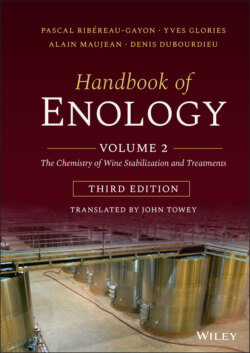Читать книгу Handbook of Enology, Volume 2 - Pascal Ribéreau-Gayon - Страница 31
1.6 Tests for Predicting Wine Stability 1.6.1 The Refrigerator Test
ОглавлениеThis traditional test is somewhat empirical. A sample (approximately 100 ml) of wine, taken before or after artificial cold stabilization, is stored in a refrigerator for four to six days at 0°C and then inspected for crystals. In the case of wines intended for a second fermentation, alcohol may be added to increase the alcohol content by 1.3–1.5% vol. This simulates the effects of the second fermentation and makes it possible to assess the bitartrate stability of the finished sparkling wine.
The advantages of this test are that it is simple and practical and requires no special equipment. On the other hand, it is mainly qualitative and does not provide an accurate indication of the wine's degree of instability. Its major disadvantage is that it takes a long time and is incompatible with short contact stabilization technologies, where rapid results are essential to assess the treatment's effectiveness in real time.
Finally, this test is neither reliable nor easily repeatable, as it is based on the phenomenon of spontaneous, non‐induced crystallization—a slow, undependable process.
